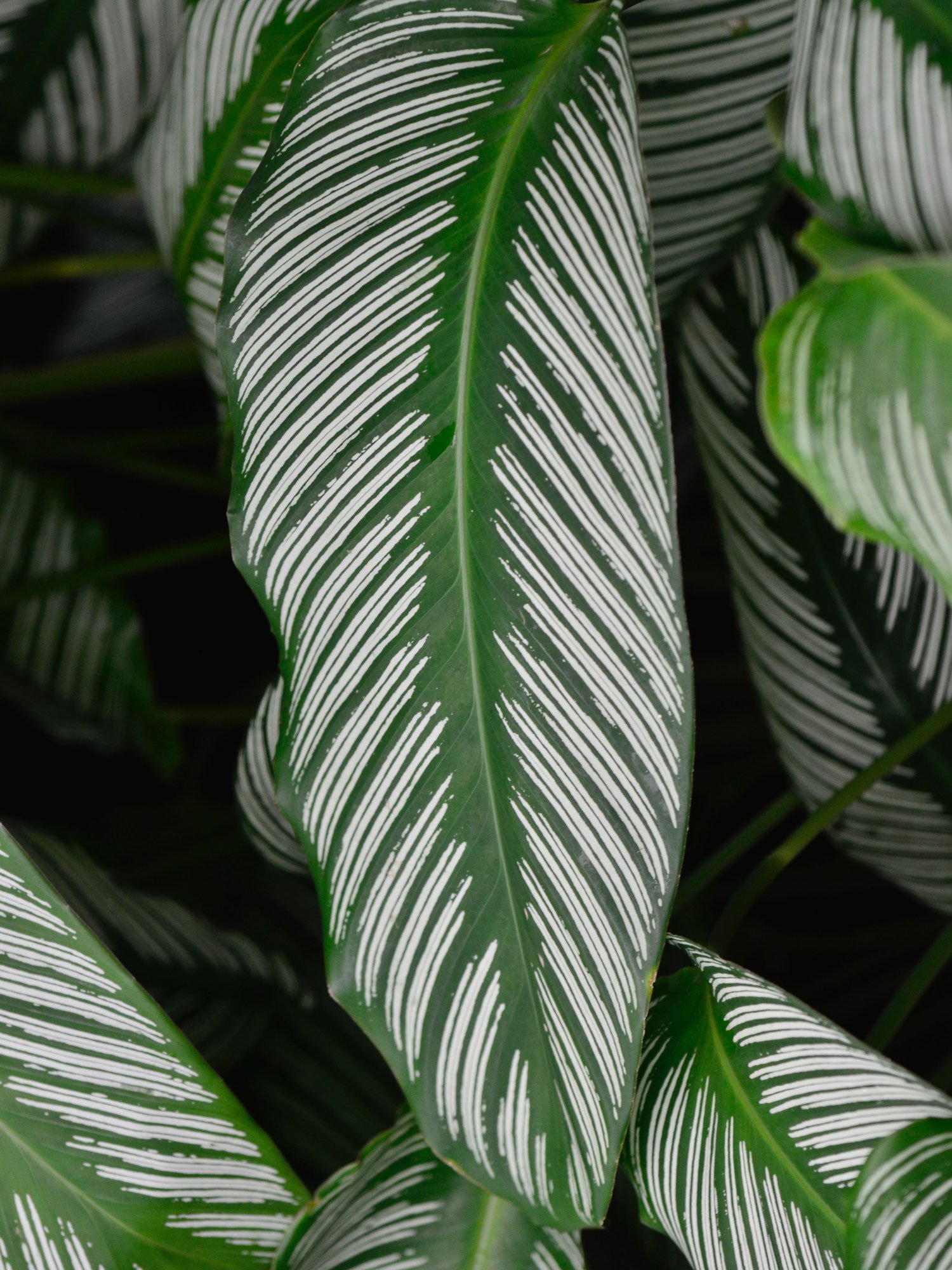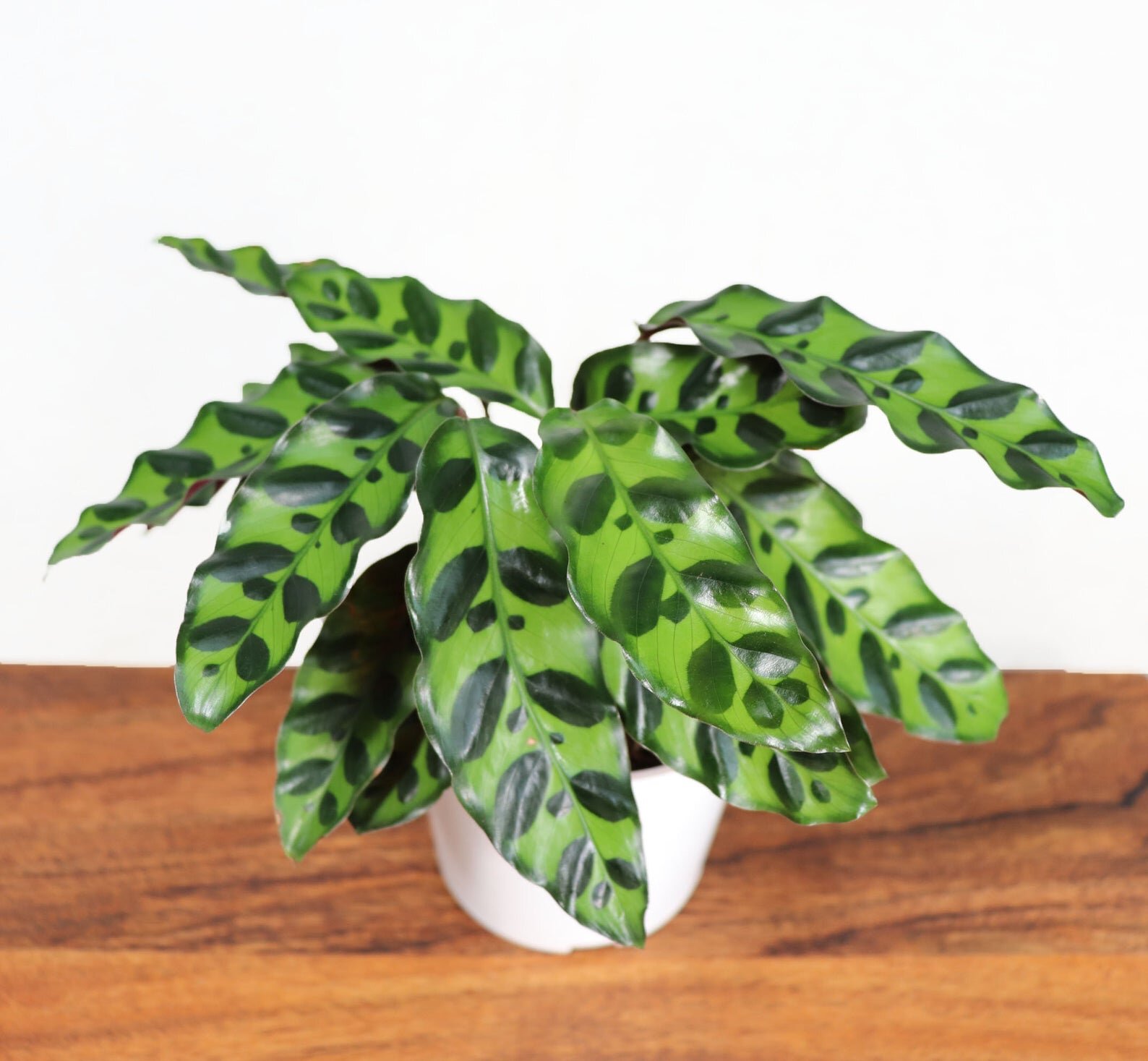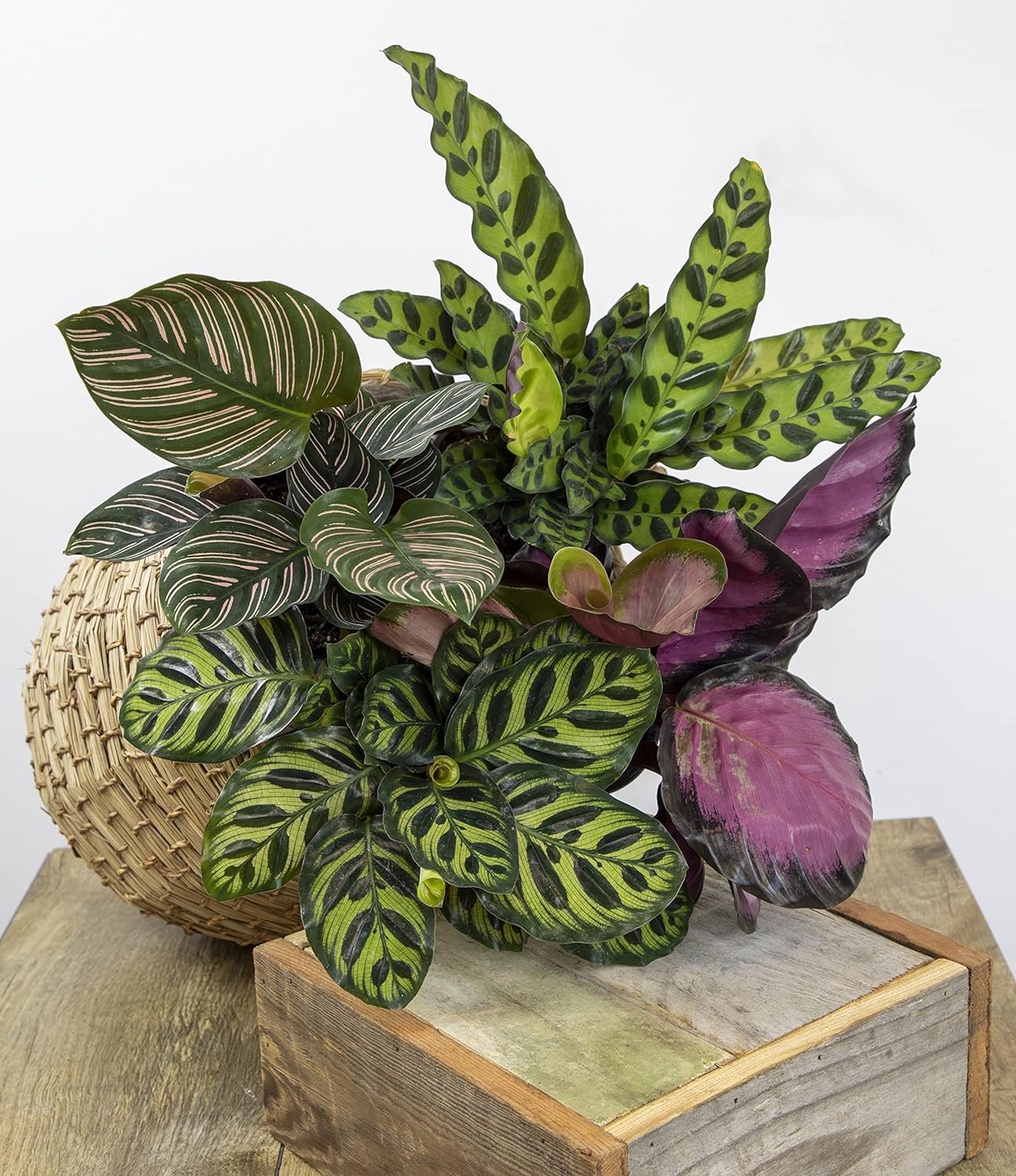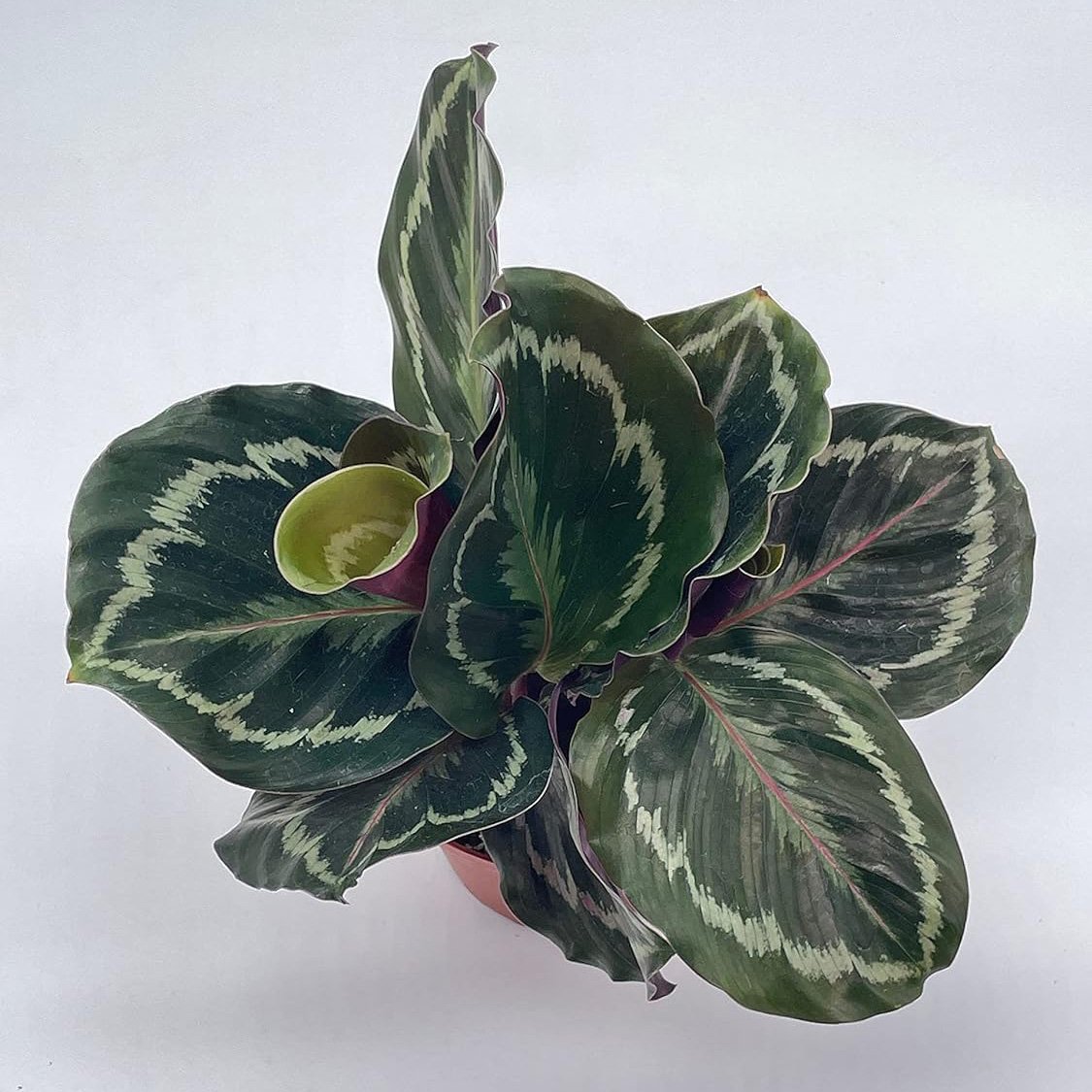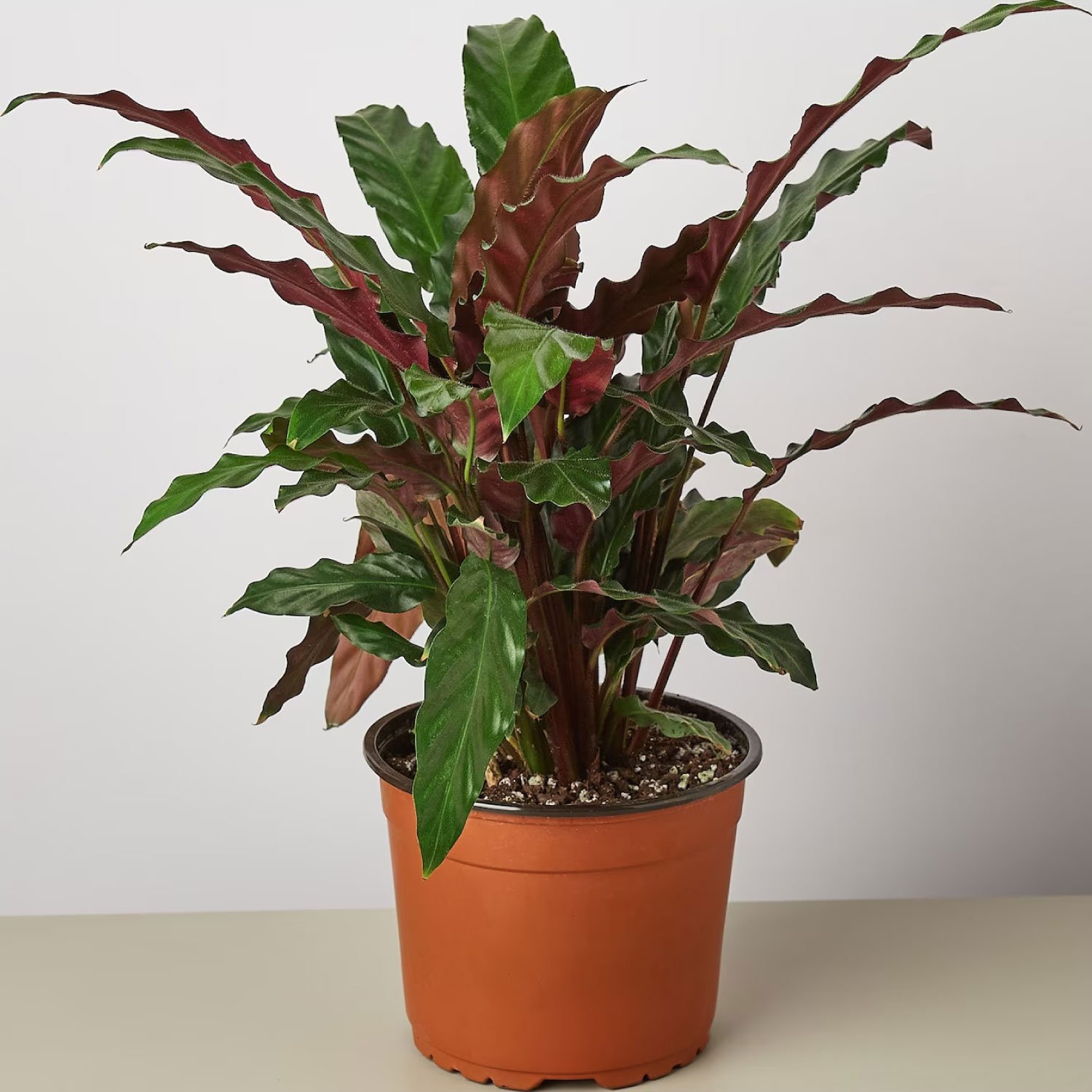Care Guide for the Calathea
As an Amazon and Etsy Associate I earn from qualifying purchases.
Calathea Ornata ‘Pinstripe’
About the Calathea
Calathea (Marantaceae) are known for their very diverse, colorful, and beautifully patterned leaves. Combined with their ability to grow in lower light conditions, these make very popular house and office plants (bonus as they are pet and child friendly). Coming from the jungle floors of South America and Africa, Calatheas are flexible with their light source but are in need of high humidity. Luckily, grouping Calathea’s together increases humidity and gives you an excuse to buy more (in case your partner questions you).
One of my favorite things about Calatheas is their nightly movement. Named ‘Prayer Plant’ for a reason, their leaves move up at nighttime and down in the daytime as they follow the path of the sun. Called nyctinasty, this is done by altering the water pressure in their stalk. Many see this and panic thinking their plants are drying out as they appear to shut down but never fear, they will be back to normal in the morning.
Types of Calathea
There are so many types of Calathea and I recommend them all! Here are five of my favorites:
Medallion (Calathea veitchiana) - The Medallion is one of the larger-leafed members of this genus. With huge, round leaves in a “medallion” pattern and a dark magenta underside to the leaves, this one is truly a showstopper. Although indoors it may only reach 24 inches tall and wide, my mom’s (seen in photo) spends its summers outside and has become quite larger than expected.
Rattlesnake (Calathea lancifolia) - The Rattlesnake has long wavy green leaves with deep green brushstrokes across them and a purple underside, eerily like some slithering friends of ours. The Rattlesnake needs lower light but very humidity and, if you are lucky, can reach 30 inches tall. This one is a great example of the nightly movement that takes place.
Rabbit’s Foot (Maranta leuconeura var. kerchoveana) - A softer textured leaf, the Rabbit’s Foot is a lighter green with a greyish underside. It has dark green splotches across the top on either side of the vein which mimics rabbit tracks. This variety doesn’t get that large, max 18 inches but can start to trail slightly and with some pruning, can get very dense.
Musaica Network (Calathea Musaica) - This extremely, unique Calathea has tiny pixel strokes that looks like a painter took hours covering each leaf. It does not have the velvet purple/red underside that is common amongst Calatheas instead it stands out through its matrix-like variegation that covers its thin, glossy, rippled leaves.
Orbifolia (Calathea orbifolia) - One of the more common varieties of Calathea, the Orbifolia has a large, round, medium green leaf with stripes of silver green running edge to edge. It can reach heights of 30 inches and is quite a showstopper, giving the visual of a dense, luscious area.
Calathea ‘Silver Star’
How to Care for your Calathea
LIGHT: A Calathea can grow many places in your home with very few exceptions. They do not do well in direct sun as it can bleach the leaves and turn them to crisps. Place your calathea in a part of a room that has low to indirect bright light. If it has to be a window, North facing should do just fine. Calatheas with darker leaves, such as the Pinstripe, do well in even lower light.
HUMIDITY: Now this is the part I struggle with the most, keeping moisture in the air. So much of this depends on where you live, the type of heating and cooling you have, and how your old your home is.
Either way Calatheas want humidity of 50% or higher with some varieties preferring more than 65%. If you are like me and you need to supplement your humidity, you can purchase a humidifier (this is mine), place your calatheas in your bathroom (hot shower excuse!) for the best results or other humid rooms like the laundry room or kitchen, and lastly keep them on a tray of pebbles filled with water.
WATER: Because Calathea’s can be a little finnicky, I like to give them dechlorinated water or if you are blessed with a house, fresh water from your rain barrel. For easy dechlorinated water, I leave my water jugs out overnight which gives time for the chlorine to evaporate. When watering, make sure to keep these babies moist but pour away any excess water that ends up in your tray. Make sure to have a pot with drainage holes because if it sits in water it will get root rot. Keep an eye on the dryness of the soil and water when you feel it start to dry out.
TEMPERATURE: Not surprinsgly, these jungle plants are not cold hardy, let alone cool hardy. They want temperatures over 60°F (15°C) in your house. If you have drafty windows, heating vents, radiators, fans etc. you need to make sure your Calatheas stay clear. Drafts can not only suck humidity out of the air but also provide uneven temperatures resulting in an unhappy Calathea. They are pickly little friends.
SOIL: Calatheas prefer a well-draining potting mix. If you are buying a bag at the store lool for ones that contain compost, perilite, charcoal, orchard bark, pine bark, coco coir, and worm castings. There are some stores that even sell specific Calathea and Maranta soil.
FERTILIZER: It is best to fertilize your Calathea's in the growing months with an even balanced fertilizer solution. This will help them remain dense and expand their root system. I like to use a water soluble fertilizer like this so I can control how much I am giving my plant.
Common Questions
CURLING LEAVES: Curling leaves are a very common issue with Calatheas. If your plant is sitting in too much light it will start to burn and curl inward. Move it farther away from the light. The other, most likely, reason is that it is drying out and in an attempt to conserve water, it is curling up. Water it immediately and you will see it unfurl soon.
BROWNING: Brown leaves and tips are also a common issue. This can come from a lack of humidity and, I have to say, is my biggest issue with this plant. Increase your humidity using the methods listed in the humidity section above. The other reasoning could be that your water has too many chemicals and minerals in it. Try using distilled water and see if that helps.
TERRACOTTA, PLASTIC OR CERAMIC: You may think that terracotta would not be ideal as it dries out soil faster, it can be advantageous for you. Because the pot is breathable it allows the soil to stay moist but not wet; however, if you tend to under-water or live in a dry place, keep with ceramic or plastic.
GNATS: These damn things amirite? While you can use those fun fly traps for your plants, you need to address the reason they are there. With the moistness that Calatheas require, it can make an ideal home for fruit flies. Allow the top of your soil to dry out and instead water from the bottom for awhile.
Ranging from velvet textures to geometric patterns and magenta undersides, there are so many amazing forms of Calatheas and I hope this inspires you to fill your home with a couple. Tag me on Instagram with your babies @thegreenmadhouse and let me know if you have any questions below.

